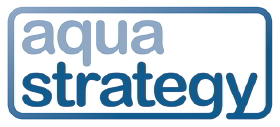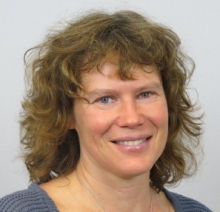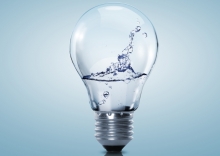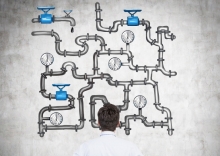Issue:
The water company of the Danish city of Aarhus has set itself the ambitious target of transforming one of its wastewater treatment plants so that it will produce 50% more electricity than it requires for day-to-day operation, a move that is attracting attention from around the world. Keith Hayward spoke with Per Overgaard Pedersen about what is a ‘live test’ project, whose full outcome will only be known once commissioning begins later this year.

Aarhus Water, the water company of the Danish city of Aarhus, has an ambitious aim for its Egaa wastewater treatment plant: that it should produce 50% more electricity than it uses in day-to-day operations. This goal fits with the status of the country as a world leader in renewable energy. It fits also with the ambitions of the city, which has set itself a target of getting its carbon footprint in balance by 2030. ‘Our company followed that by saying that Aarhus Water would also like to be energy positive and also that the carbon footprint should be zero in 2030,’ says Per Overgaard Pedersen, the company’s chief engineer responsible for wastewater development.
Setting a goal is one thing. Achieving it is another when it is not known exactly how the goal will be met, which is the case as far as the Egaa treatment plant is concerned. The upgrade has of course been planned, and some aspects pilot tested, but the actual outcome of the final innovative combination of processes will only be known once the full scale live project is completed. ‘This is a live test, and we don’t have any possibility of saying if it is going to comply with the project assumptions, because this [combination] has never been tested in the world before,’ says Pedersen.
It is not surprising then that the project is generating interest from around the world. The company only recently hosted visits from operators from Illinois, USA and from the International Energy Agency, says Pedersen, with interest also from as far afield as India and Australia. ‘There are really many, many countries who are interested in the development of this new technology,’ he says.
The process combination
Aarhus Water does have some very relevant experience to draw upon. The company serves around 300,000 customers and has already upgraded its main wastewater treatment plant, the Marselisborg plant, so that it produces around 30% more electricity than it uses.
To take this further at the Egaa plant, the overall process aims are to generate electricity using biogas from anaerobic digestion, and to optimise the balance between minimising the amount of carbon expended during treatment of the wastewater and maximising the amount of carbon passed to the digestion stage for biogas production. The intention is that this will achieve the goal of producing 50% more electricity than is required by the plant. Aarhus Water’s wider plans involve building a new wastewater treatment plant Marselisborg and closing down two others so that by 2025 it has only the two treatment plants, both highly energy efficient.

The Egaa plant has not to date had a primary treatment stage, and the first important change for the plant comes here. ‘We are now introducing a new primary treatment where we are installing microfiltration,’ says Pedersen. This ‘carbon harvesting’ step will use filters from Norwegian supplier Salsnes Filter. ‘We are using a very fine filter to take out approximately 60% of the COD in the inlet,’ he explains, noting that this compares to the more usual 40-50%.
This removal rate will be achieved using dosing with a polymer prior to the filtration. A further option could have been to dose with ferric chloride to achieve an even higher removal rate. ‘We have done some pilot testing which indicated we could come up to 70-80%,’ says Pedersen. It was decided not to do this in case insufficient organic matter would then be available to achieve denitrification for nitrogen removal in the second stage of treatment.
Secondary treatment at the upgraded Egaa plant is to be provided using the EssDe process in what is another innovation. This process, which stands for ‘Energy Self Sufficient by Demon’, uses the Demon process patented by the University of Innsbruck and harnesses the use of anammox anaerobic ammonia oxidising bacteria for nitrogen removal from the main process flow. The system is being provided to the Egaa plant under license by Sweco.
A new anaerobic digestion plant will treat the sludge flows to generate the biogas. The biogas will be fed to a CHP plant to generate electricity, in addition to which an Organic Rankine Cycle unit will produce yet more electricity from waste heat. A Demon plant will treat the liquid flow from the digestion, serving also to feed anammox bacteria to the secondary treatment.
‘To bring the plant from being an energy consumer to net self-sufficiency of 150%, that’s a huge challenge.’
Per Overgaard Pedersen
Cold water confidence
These components will need to work together efficiently if the new Egaa plant is to be a success as far as implementing the ‘150%’ concept is concerned.
Pilot testing has given confidence that the new primary stage carbon harvesting will work as planned. ‘The only thing that we actually did pilot testing on is the primary treatment,’ says Pedersen. ‘We did pilot testing with different kinds of polymers and different operational situations, and so we are quite sure that we can remove the minimum of 60% of the carbon.’
The Marselisborg plant also features the same CHP unit as will be used at the Egaa plant, and its performance over the last nine months or so means Pedersen is confident this will deliver the expected electricity and heat production.
Key to the overall performance will be the secondary treatment stage, which is described as a cold anammox process. ‘The critical factor will be if the process is going to work at the low temperatures that we have here for our wastewater in Denmark,’ says Pedersen. The current secondary treatment is based on the normal bacterial populations providing nitrification and denitrification. ‘The new anammox bacteria are actually more sensitive to temperature lowering. That is why we are worried about the efficiency at temperatures down to 9-10 degrees C,’ he says.
The carbon harvesting will however be independent of temperature, ensuring most of the carbon reaches the digesters, and at worst the secondary treatment will in effect operate as it does currently. ‘We believe that it is probably only going to be operating part of the year with the highest temperatures, and then we need to have another operational strategy during the winter months. Hopefully it will not have too big an impact on the actual energy efficiency, because it will only be a smaller part of the year where we need to switch over to maybe another process,’ explains Pedersen.
Getting ready for commissioning
Much of the new plant has been completed, with the recent focus having been on pipework connections and installation of the CHP and heat exchangers. ‘We expect to start up the plant mid-August. Then some testing will be done, and commissioning is in September, October and November, I believe,’ says Pedersen. The first phase of commissioning will involve getting stable operation of the carbon harvesting, commissioning the digesters, and then the Demon process, he explains. The aim then will be to get the plant working as a whole and achieve the target for energy self-sufficiency.
This target is just one aspect of current wider enthusiasm around the potential for moving towards a circular economy approach, which also includes looking at opportunities for recovering resources such as phosphates. Unsurprisingly, Aarhus Water has this in mind also, but has for now decided to focus on the energy dimension.
‘We need to demonstrate the self-sufficiency on energy,’ says Pedersen. He points out that phosphorus recovery was identified during the innovation phase for the project as being an important challenge for the plant, but that plans to implement phosphorus recovery were not put in because of the possibility that this would require use of some of the available carbon. ‘[We saw that] it might not be a good idea to introduce phosphorus recovery at the same time as we are demonstrating the guarantees on power self-sufficiency, so that is why we decided to postpone that maybe a year or two, until we have finished the guarantee testing,’ he explains.
‘We believe that energy is also a resource, and we have focused on this as the main driver for this project,’ says Pedersen. ‘To bring the plant from being an energy consumer to net self-sufficiency of 150% in power, when today you are using approximately 2.9 GWh a year, that’s a huge challenge.’
Keywords:
- Denmark, water and energy, sewage treatment






